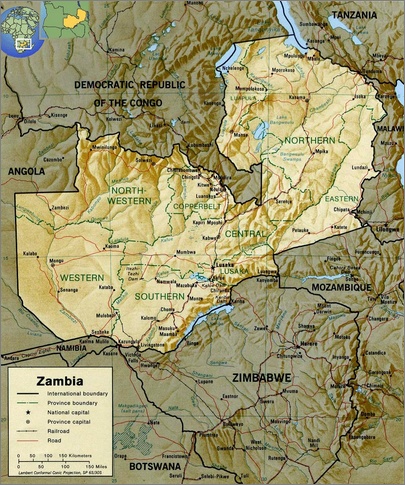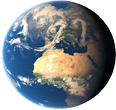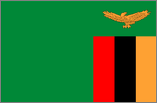





| One of the most well known national Parks of Zambia. And for a good reason. It is thought to be the best place in Africa to spot Leopard. It's about a 50% chance of spotting one during a night drive. Apart from leopards, the park is home to several other interesting mammals with a localized distribution, such as the Thornicrofts Giraf, Cooke's Wildebeest, Puku and zebra with truly evenly spaced black and white stripes. Furthermore there is great variety of birdlife, which is attracted by the many different types of ecosystems: savannah, swamp, riverine forest, pools and miombo forests. Unlike several other National Park in Southern Africa, this is still a true wilderness and getting there takes some time. a 120km road in poor condition gets you there from Chipata. Unless maony isn't an issue staying in the park overnight isn't recommendable. Luckily, several lodges just outside the NP have campgrounds, for the selfsufficient travellers. We stayed at flatdogs, which we can highly recommend. The nightsafaris organised by the lodges (since you're not allowed to drive in the park yourself after dark) are the highlight of a visit to this park. Although it is not cheap, these nightdrives are worth every penny, becuase the guides are topnotch wildlife spotters and very knowlegdabe. On a single nightdrive we saw lions, leopord, jackal, serval, several mogoose species, genets and several diurnal mammals. Altogether, a beautiful park that you'll have to love. |

| Zambia in general is not very touristy, but park is even less on the beaten track. A 3 h sand road brings you to the main entrance of the park, where a ranger tells you that is busy in the park since there were two tourists in the park as well last week... The campsites were closed, but we could pitch our tents anywhere we'd like to. So what would be the reason to come here then? It is the last stronghold of Kafue Lechwes, a beautiful semi aquatic antilope that lives in herds comprising hundreds of individuals. In addition, birdlife is great (vultures, many heron species, ducks and pygmy geese) And the fact that you're the only one in the park makes it a really special experience. |

| We visited Chipata on our way from Malawi to South Luangwa National Par and to visit a friend from Holland for a couple of nights. He has been allocated to this town as a VSO volunteer to help with the coordination of local healthcare. It was interesting to see how he was dealing with the differences in Western and African mentality running and organizing a business. Thanks, Leon, for your hospitality! |

 |
 |
 |
 |
 |

| This privately owned land is open for tourists. It protects a large tract of pristine Miombo woodland, a type of forest that is heavily under threat for charcoal demand. It is designated as of the 20 most important birding sites in Zambia as it harbours many Miombo specials. So it's mainly a draw for birders. However the area also is great for hiking, and there are many fine trails that lead you along rivers, waterfalls and big round granite rocks typical of the area. And if you're lukcy as a bonus you may stumble upon some mammals that have moved in from South Luangwa NP, with which it is continuous. |

| This is one of the big attractions of Southern Africa. The spectacular falls are the second biggest in the world after the Iguazu falls in Brazil/Argentina. Just like in South America, they are also split between two countries: Zambia and Zimbabwe. We visited the Zambian side. The africans named is very appropriately 'the smoke that thunders'. It's exactly that: a lot of watewapor and noise. The viewpoints on the Zambian side are great and allow you to view the falls from both upstream and downstream. Make sure to bring a poncho as you WILL get wet! Nowadays the falls are totally tuned into making money out of tourism. You can do bungeejumps, rafting, Boozecruises, microflights and so forth. We were not that keen on doing any of that stuff, but there's is plenty to keep you entertained if you want to. |
| Physical activities: eg Walking / Rafting / swimming Nature: eg National Park / Reserve City / Cultural site |
 |
 |
 |
 |
© Bart Everts
 |
 |

| Not that far from the border with Zaire, lies this little national park. People that come here, do not come for the abundance of big mammals. It are the rare or elusive species that are the attractions. This park is probably the best place in the world to see the secretive Sitatunga, the aquaticcousin if the bushbuck. Futhermore, the park is home to manycentral african bird species that have their southern distribution limit in this park. Don't expect to get much comfort here, as there is no running water. The rangers will heat a bucket of water with a fire, in case you'd like to take a shower! |
 |
 |
 |







